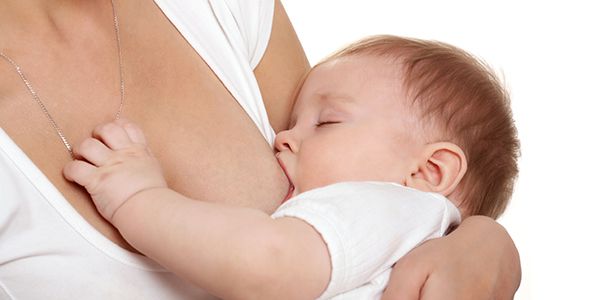Dangerous bacteria in babies can be held at bay by a unique chemical reaction that occurs between breastmilk and baby saliva, a University of Queensland breakthrough study has shown.
UQ researchers, including neonatal care specialist Associate Professor Helen Liley, found that bacteria established in the mouth and intestines of babies have lifelong effects on health.
“We knew for a long time that breast is best, but hadn’t demonstrated why before,” Dr Liley said.
“This research discovered a previously unknown interaction – between milk and saliva, that appears to provide a unique mechanism in mammals that boosts early immunity.
“It helps select good bacteria while stopping dangerous bacteria.”
In another positive for breastfeeding, the team led by Professor Nick Shaw from the School of Pharmacy also found it simultaneously stimulates the development of a baby’s digestive system.
“This has critical implications for preterm, small and sick newborns,” Professor Shaw said.
“Babies who are fed by intubation (gastric tube to the stomach) bypass the milk-saliva interaction, so there should be consideration of this factor.
“There’s an also an important aspect for breastmilk banking.
“Increasingly in hospitals, donated breast milk is given to preterm babies rather than using formula milk, but pasteurising the breast milk removes the beneficial mechanism.”
The demonstrated milk-saliva mixing is short-lived, for about six weeks after birth, with an apparent function of encouraging healthy bacteria.
Research found that the median levels of xanthine and hypoxanthine — crucial in milk-saliva mixing — were 10 times more concentrated in the saliva of newborns than in adults.
The interaction of these two substances with enzymes in breast milk inhibited the growth of harmful bacteria Staphylococcus and Salmonella, while baby saliva promoted non-harmful Lactobacillus.
The research, published in PLOS ONE, was a collaboration with the Mater Mothers’ Hospital Neonatology Unit and the Queensland University of Technology Department of Microbiology.
It also involved research from UQ’s School of Veterinary Science, showing that saliva from cows, sheep, goats, horses, dogs, cats and even a camel shared the anti-bacterial function.
(Source: The University of Queensland, PLOS ONE)










